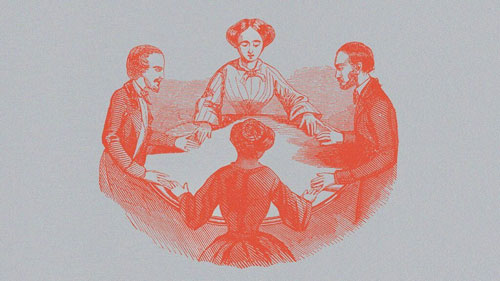RESEARCHERS have investigated what characterizes people who say that they can hear the voices of the dead. Spiritualism is a movement whose adherents believe that the spirits of deceased people continue to live on after physical death.
Mediums claim that they have the ability to communicate with the spirits through seeing (“clairvoyant”), feeling (“clairsentient”), or hearing (“clairaudient”) them.
Studies from the Universities of Cardiff, Northampton, and Lancaster — all of which are in the United Kingdom — have argued that religious and spiritual experiences (RSEs), such as clairaudience, can be useful as a comparison to auditory hallucinations of people with certain mental health conditions.
A new study, which appears in the journal Mental Health, Religion & Culture, examined links between auditory spiritual communications experienced by mediums, beliefs, and personality.
The study was part of the Hearing the Voice project. Dr. Adam J. Powell, of the Department of Theology and Religion at the University of Durham in the U.K, and Dr. Peter Moseley, of the Department of Psychology at Northumbria University, also in the U.K., carried out the study.
“Spiritualists tend to report unusual auditory experiences [that] are positive, start early in life, and [that] they are often then able to control,” explains Dr. Moseley. “Understanding how these develop is important because it could help us understand more about distressing or non-controllable experiences of hearing voices too.”
The researchers recruited 65 spiritualist participants, as well as 143 other participants to act as a general population control group. Most came from the U.K., North America, Australasia, and Europe.
The team asked the participants to complete tailored versions of online questionnaires that are known to assess various traits consistently.
The Tellegen Absorption Scale: This uses yes/no questions to measure how likely a person is to become fully immersed in internal and external stimuli-like movies, mental imagery, music, or thoughts. This is also called proneness to absorption.
The Revised Launay-Slade Hallucination Scale: This assesses a participant’s tendency to experience auditory and visual hallucinations.
The Revised Paranormal Beliefs Scale: This assesses participants’ perception of traditional religious beliefs, psi (extrasensory perception and ability to influence physical entities without interaction), witchcraft.










